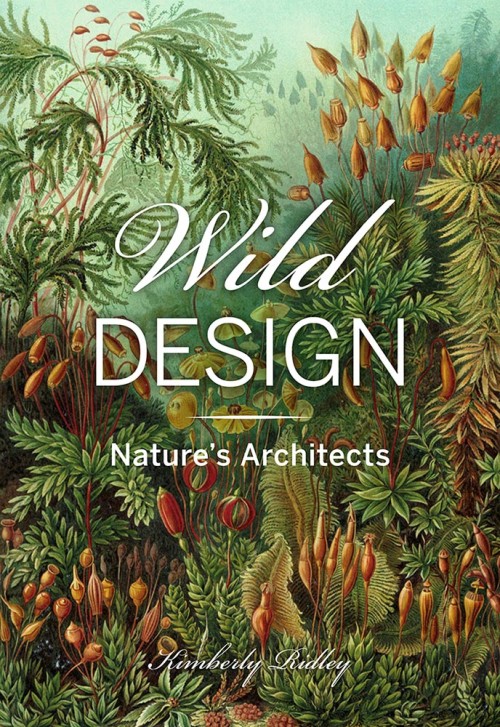by Kimberly Ridley
Princeton Architectural Press, 2021
Many of us turn to the natural world to gain perspective, to learn, to find order and beauty in species and systems outside ourselves. While smartphones and social media have the potential to boost this connection to nature, our taps and swipes on glass smartphone screens can also bring a cacophonous and overwhelming unease as we feel bombarded by information that takes us farther from the world outside our doors. Kimberly Ridley presents an antidote with Wild Design: Nature’s Architects, an appealingly tactile, compact volume that she describes as “an invitation to reconnect and rediscover your sense of wonder.”
Wonder is at the heart of Wild Design. From bedrock on up, Ridley explores the patterns, order, and problem-solving capabilities of natural materials, organisms, and ecosystems. In setting out to counter “loneliness and despair” resulting from our screen addictions, Ridley chooses an intriguing tool: European and American natural history engravings, paintings, and other meticulously rendered illustrations, mostly from the 19th century, with a few earlier and later inclusions. Carefully chosen, full-color images are organized by taxon and paired with detailed captions by Ridley that often include information that would have been inaccessible to the illustrator.
The plate showing oyster mushrooms, for example, includes a caption describing how these fungi can break down hydrocarbons in fuel oil and be used for cleaning up oil spills. While reading such details, I imagined the artist Leon Dufour carefully rendering the oyster mushroom in 1891, not knowing that its undulating cap and intricate gills held solutions to future catastrophes. What might the natural world have yet to teach us? These historic images with their modern commentaries create a dialogue between past and present, and help the reader visualize the space for continued learning.
Each chapter features a short essay by Ridley on patterns and design themes present in living and nonliving taxa, beginning with rocks and minerals and moving through diatoms and radiolarians, mollusks and corals, fungi, plants, arthropods, birds, and mammals. Each straightforward, fact-filled essay precedes a series of full-page illustrations highlighting some of the fascinating structures and functions in that taxon – how termite mounds vent the carbon dioxide produced by the termites and pull in fresh oxygen, for example, or how bald-faced hornets use their antennae to measure their nests’ hexagonal cells to ensure the correct angles are formed while building. The beautifully printed, full-color illustrations that accompany Ridley’s prose make up the bulk of the book, with each chapter featuring 5 to 15 plates. The illustrations are gorgeous, and made me curious to see natural history renderings from other cultures and regions besides northern Europe and North America.
I appreciated that one of the two mammals highlighted is local to our region, whose abilities are certainly worthy of feature by an architectural press: the beaver. In just a few short paragraphs, Ridley helped me understand more fully the methodical process by which these “furry hydrological engineers” go about constructing their dams and tailoring their design to the stream in which they are building. As beaver-based stream and wetland restoration becomes more established in our region, this book illuminates beavers’ critical role with an architectural perspective.
I came away from Wild Design reflecting on the intricacies of nature, and the opportunity each of us has to build relationship with the natural world through observing its details, piecing together its patterns, and feeling the satisfying spark of connection as we realize the complex interplay between structure, function, and behavior in the organisms and materials around us.


